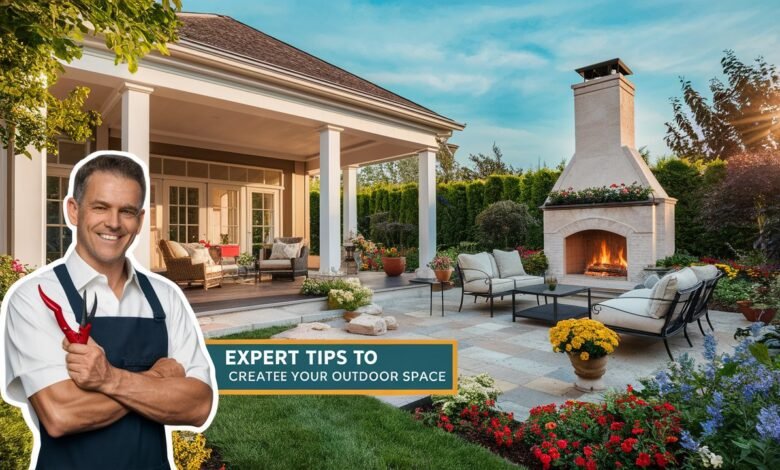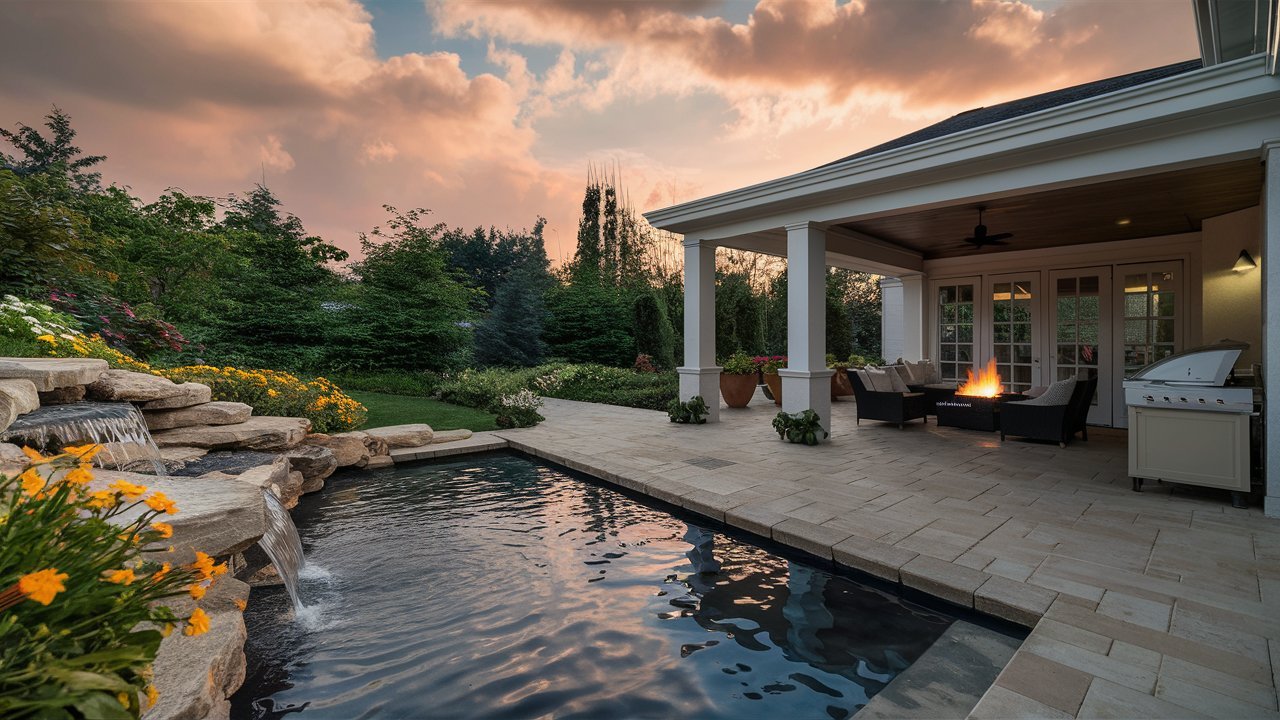“Creating Your Dream Outdoor Space: Expert Tips for a Stunning Garden and Patio”

Introduction
Transforming your garden and patio into a serene, functional, and visually appealing space requires careful planning, creativity, and knowledge. Whether you’re a seasoned gardener or a novice looking to revamp your outdoor area, this guide will walk you through essential design principles, plant selection, layout strategies, and maintenance tips tailored to elevate your garden and patio. From maximizing small spaces to incorporating sustainable practices, we’ll cover everything you need to create an inviting oasis that reflects your personal style. Let’s dive into the key elements that will turn your backyard into a year-round retreat.
1. Designing a Functional Garden Layout
A well-designed garden layout is the foundation of any thriving outdoor space. Start by assessing your garden’s size, sunlight exposure, and soil quality. Divide the area into zones for planting, relaxation, and entertainment. Incorporate pathways made of gravel, stone, or wood to connect these zones and prevent soil compaction. Raised beds or vertical gardens are ideal for small gardens, while larger spaces can accommodate flower borders, vegetable patches, or water features. Balance aesthetics with practicality—choose plants that suit your climate and consider their growth patterns to avoid overcrowding. A cohesive design ensures your garden remains both beautiful and manageable.
2. Optimizing Your Patio for Comfort and Style
Your patio serves as an extension of your indoor living space, so prioritize comfort and functionality. Select durable, weather-resistant materials like composite decking, natural stone, or stamped concrete for longevity. Arrange furniture to encourage conversation—think sectional sofas, coffee tables, and ambient lighting like string lights or lanterns. Add shade solutions such as pergolas, umbrellas, or retractable awnings to make the area usable even on sunny days. Integrate decorative elements like potted plants, outdoor rugs, and throw pillows to inject personality. For smaller patios, opt for foldable or multi-functional furniture to save space without compromising style.
3. Choosing the Right Plants for Your Garden
Plant selection can make or break your garden’s success. Focus on native species adapted to your region’s climate, as they require less water and maintenance. Mix perennials (e.g., lavender, hostas) with annuals (e.g., petunias, marigolds) for year-round color. Incorporate evergreen shrubs or ornamental grasses for structure during colder months. Edible gardens are both practical and rewarding—herbs like rosemary and thyme thrive in pots, while raised beds are perfect for vegetables like tomatoes and peppers. Always consider sunlight requirements and spacing to ensure healthy growth. Group plants with similar water needs to simplify irrigation.
4. Incorporating Sustainable Practices
Sustainability is key to a low-maintenance, eco-friendly garden and patio. Install a rainwater harvesting system to reduce water usage, and opt for drip irrigation to target plant roots efficiently. Use organic mulch to retain soil moisture and suppress weeds. Compost kitchen scraps and yard waste to create nutrient-rich soil amendments. Choose solar-powered lights for your patio and avoid chemical pesticides by introducing beneficial insects like ladybugs. Upcycle old furniture or materials for DIY projects, such as pallet planters or reclaimed wood benches. These practices not only benefit the environment but also cut long-term costs.

5. Seasonal Maintenance Tips for Gardens and Patios
Regular upkeep ensures your outdoor space remains vibrant through every season. In spring, prune dead branches, aerate the soil, and refresh mulch. Summer demands consistent watering and pest control—inspect plants for aphids or fungal diseases. Autumn is ideal for planting bulbs, cleaning gutters, and storing patio furniture before winter. During colder months, protect delicate plants with frost cloth and clear pathways of ice. For patios, pressure-wash surfaces annually and reseal wooden decks to prevent weathering. A maintenance calendar helps you stay organized and address issues before they escalate.
6. Landscaping Ideas to Elevate Curb Appeal
Landscaping ties your garden and patio into a harmonious whole. Use hedges or trellises to define boundaries and create privacy. Add focal points like a fire pit, fountain, or sculpture to draw the eye. Layer plants by height—tall trees or shrubs at the back, mid-sized perennials in the middle, and groundcovers like creeping thyme at the front. Blend hardscaping (e.g., stone walls, pavers) with softscaping (plants, grass) for texture contrast. For slopes, consider terraced gardens or retaining walls to prevent erosion. Lighting plays a crucial role—highlight pathways with solar stakes or uplight trees for dramatic effect.
Conclusion
Your garden and patio are more than just outdoor areas—they’re canvases for creativity, relaxation, and connection with nature. By focusing on thoughtful design, sustainable practices, and seasonal care, you can cultivate a space that thrives in every weather and wows guests year-round. Start small, experiment with ideas, and don’t hesitate to adapt as your needs evolve. With patience and effort, your dream outdoor retreat is within reach.
Frequently Asked Questions (FAQs)
Q1: How much does it cost to redesign a garden and patio?
Costs vary widely based on size, materials, and labor. DIY projects can start at a few hundred dollars, while professional landscaping may range from
3,000to
3,000to15,000+. Prioritize essential upgrades first, like soil preparation or durable furniture.
Q2: What are the best plants for a low-maintenance garden?
Succulents, lavender, ornamental grasses, and native perennials like coneflowers require minimal watering and care. Groundcovers like clover or sedum also reduce weeding.
Q3: How do I protect my patio furniture during winter?
Use waterproof covers, store cushions indoors, and apply protective sealants to wood or metal surfaces. Consider storing lightweight furniture in a shed or garage.
Q4: How often should I water my garden?
This depends on your climate and plant types. Generally, 1–2 inches of water per week is sufficient. Use a soil moisture meter to avoid overwatering.
Q5: Can I design a garden and patio in a small backyard?
Absolutely! Vertical gardens, foldable furniture, and multi-functional layouts maximize space. Mirrors and light-colored decor can create an illusion of a larger area.
Q6: Is DIY landscaping feasible for beginners?
Yes—start with simple projects like container gardens or pathway installations. Online tutorials and local workshops can build your skills over time.
Transform your outdoor space with confidence using these expert tips from MyGardenAndPatio.com! 🌿✨



